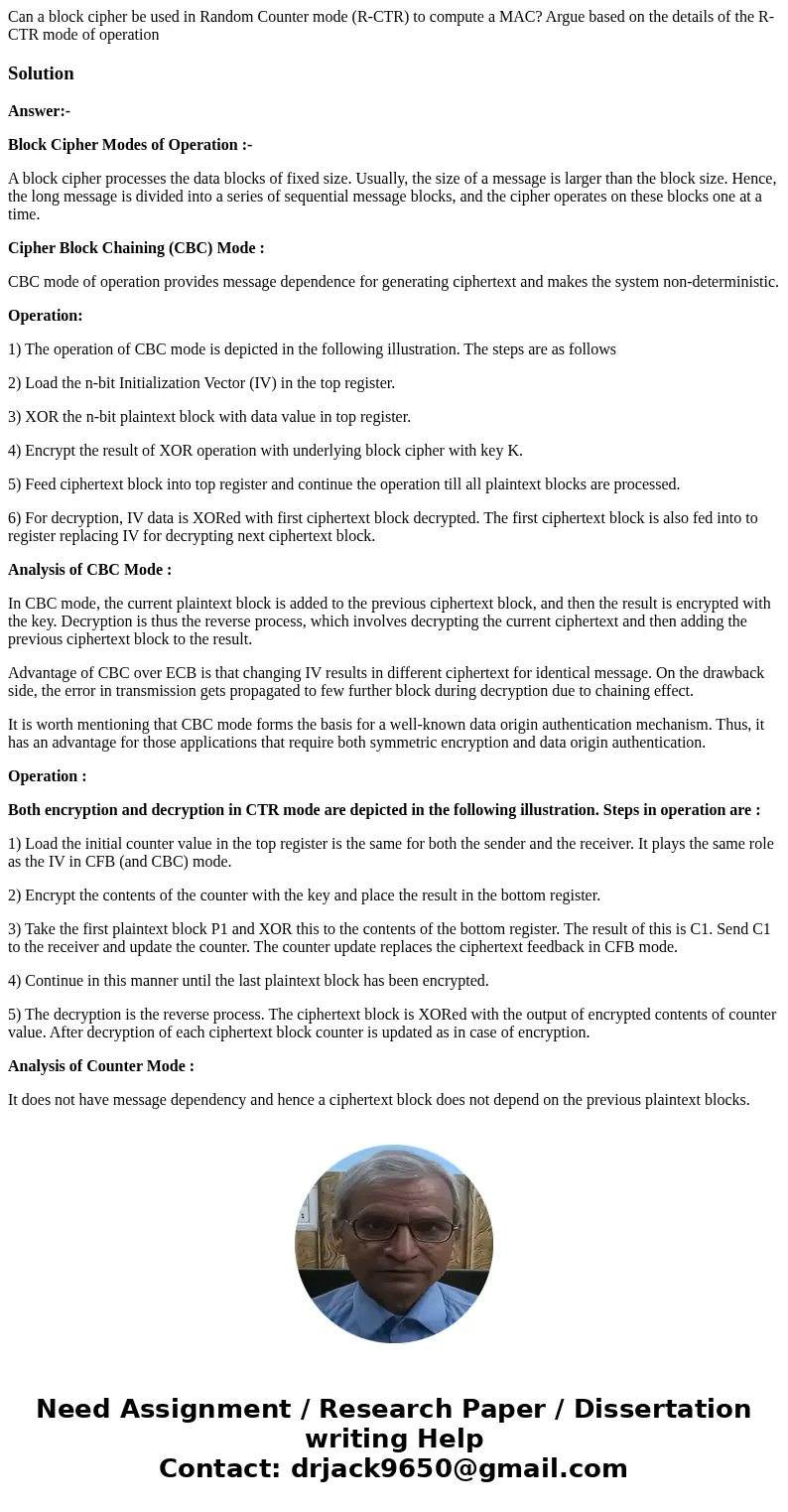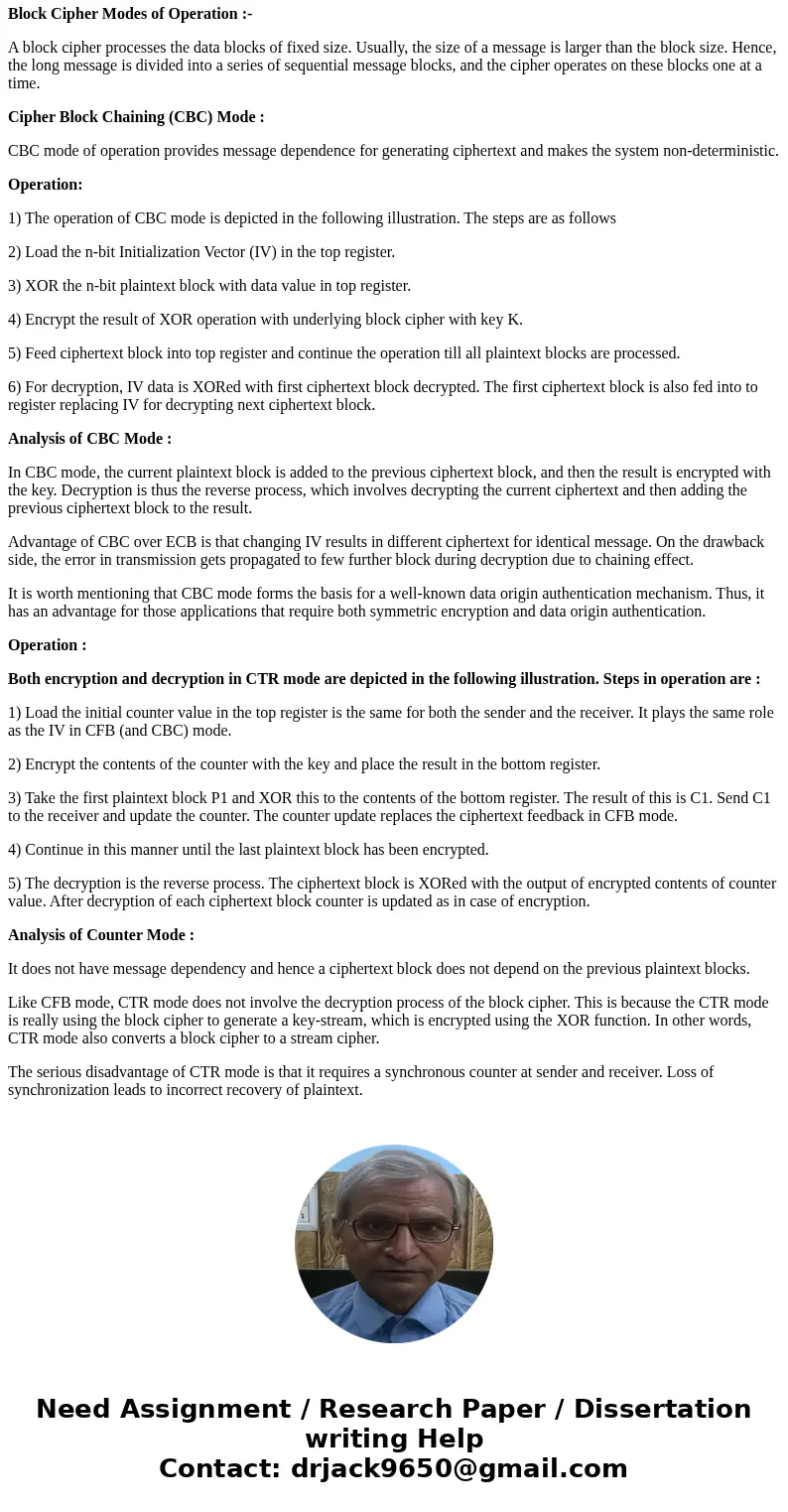Can a block cipher be used in Random Counter mode RCTR to co
Can a block cipher be used in Random Counter mode (R-CTR) to compute a MAC? Argue based on the details of the R-CTR mode of operation
Solution
Answer:-
Block Cipher Modes of Operation :-
A block cipher processes the data blocks of fixed size. Usually, the size of a message is larger than the block size. Hence, the long message is divided into a series of sequential message blocks, and the cipher operates on these blocks one at a time.
Cipher Block Chaining (CBC) Mode :
CBC mode of operation provides message dependence for generating ciphertext and makes the system non-deterministic.
Operation:
1) The operation of CBC mode is depicted in the following illustration. The steps are as follows
2) Load the n-bit Initialization Vector (IV) in the top register.
3) XOR the n-bit plaintext block with data value in top register.
4) Encrypt the result of XOR operation with underlying block cipher with key K.
5) Feed ciphertext block into top register and continue the operation till all plaintext blocks are processed.
6) For decryption, IV data is XORed with first ciphertext block decrypted. The first ciphertext block is also fed into to register replacing IV for decrypting next ciphertext block.
Analysis of CBC Mode :
In CBC mode, the current plaintext block is added to the previous ciphertext block, and then the result is encrypted with the key. Decryption is thus the reverse process, which involves decrypting the current ciphertext and then adding the previous ciphertext block to the result.
Advantage of CBC over ECB is that changing IV results in different ciphertext for identical message. On the drawback side, the error in transmission gets propagated to few further block during decryption due to chaining effect.
It is worth mentioning that CBC mode forms the basis for a well-known data origin authentication mechanism. Thus, it has an advantage for those applications that require both symmetric encryption and data origin authentication.
Operation :
Both encryption and decryption in CTR mode are depicted in the following illustration. Steps in operation are :
1) Load the initial counter value in the top register is the same for both the sender and the receiver. It plays the same role as the IV in CFB (and CBC) mode.
2) Encrypt the contents of the counter with the key and place the result in the bottom register.
3) Take the first plaintext block P1 and XOR this to the contents of the bottom register. The result of this is C1. Send C1 to the receiver and update the counter. The counter update replaces the ciphertext feedback in CFB mode.
4) Continue in this manner until the last plaintext block has been encrypted.
5) The decryption is the reverse process. The ciphertext block is XORed with the output of encrypted contents of counter value. After decryption of each ciphertext block counter is updated as in case of encryption.
Analysis of Counter Mode :
It does not have message dependency and hence a ciphertext block does not depend on the previous plaintext blocks.
Like CFB mode, CTR mode does not involve the decryption process of the block cipher. This is because the CTR mode is really using the block cipher to generate a key-stream, which is encrypted using the XOR function. In other words, CTR mode also converts a block cipher to a stream cipher.
The serious disadvantage of CTR mode is that it requires a synchronous counter at sender and receiver. Loss of synchronization leads to incorrect recovery of plaintext.


 Homework Sourse
Homework Sourse